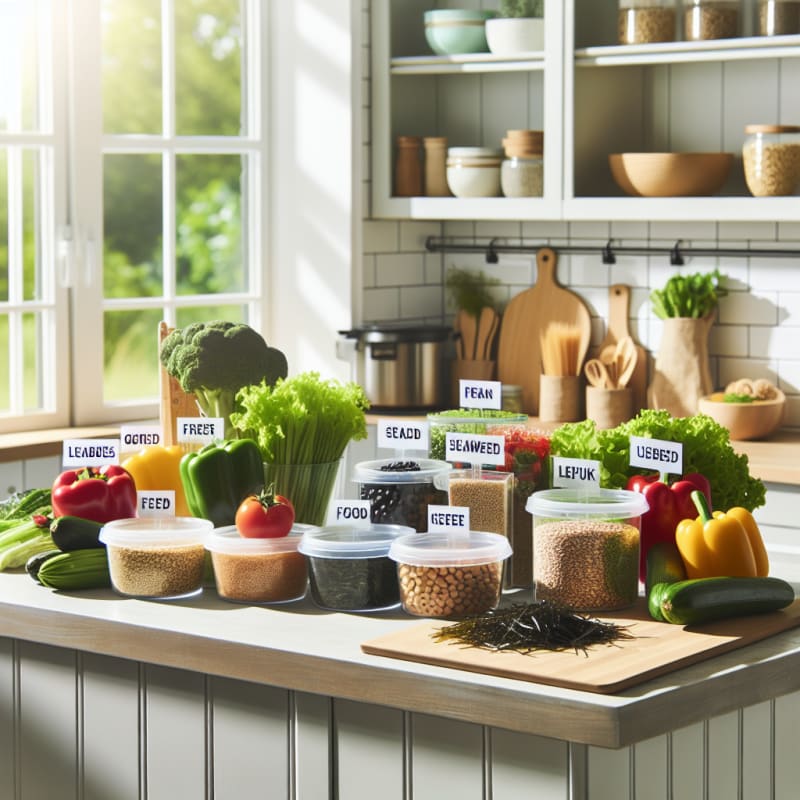What Is the SEA Diet & How Does It Help People Live Past 100?
As more people seek to understand the relationship between food and longevity, the SEA Diet—rooted in Southeast Asian eating traditions—has emerged as a promising blueprint for healthy aging. This article explores the SEA Diet, its impact on lifespan, and how tools like Food Scan Genius make it easier to adopt smarter, safer food choices, especially for those with sensitivities or dietary preferences.
Understanding the SEA Diet: A Blueprint for Longevity
The SEA Diet (Southeast Asian Diet) draws inspiration from the traditional eating patterns of countries like Vietnam, Thailand, Indonesia, and the Philippines. According to a recent MindBodyGreen article, this diet emphasizes:
- Fresh vegetables and fruits (leafy greens, tropical fruits, herbs)
- Whole grains (rice, millet, buckwheat)
- Lean proteins (fish, tofu, legumes, eggs)
- Fermented foods (kimchi, tempeh, pickled vegetables)
- Minimal processed sugars and refined oils
Unlike many Western diets, the SEA Diet is naturally low in saturated fats and added sugars, while being rich in fiber, antioxidants, and omega-3 fatty acids. This nutrient profile is associated with lower rates of chronic disease and supports healthy aging, as confirmed by research published in PubMed and the FDA.
How Does the SEA Diet Promote Longevity?
Populations in Southeast Asia often have higher proportions of centenarians—people living past 100—than many Western countries. Researchers attribute this longevity to:
| SEA Diet Feature | Longevity Benefit |
|---|---|
| High intake of plant-based foods | Reduces inflammation, supports gut health1 |
| Regular consumption of fish and seafood | Boosts heart and brain health via omega-3s2 |
| Fermented foods | Improves digestion and immune function3 |
| Low processed food intake | Lowers risk of obesity, diabetes, and cardiovascular disease |
Additionally, the SEA Diet is culturally linked to mindful eating and community meals, which further support emotional well-being and healthy habits.
SEA Diet vs. Western Diets: Ingredient Transparency and Food Safety
When adopting the SEA Diet outside Southeast Asia, ingredient sourcing and labeling become crucial—especially for those with food sensitivities or dietary restrictions. Here’s how ingredient regulations compare:
- United States (FDA): Requires disclosure of top 9 allergens, but “may contain” statements are voluntary. Nutrition labels must list added sugars and certain fats.
- European Union (EFSA): Mandates clear allergen labeling in bold, stricter on food additives, and requires country-of-origin for some ingredients.
Recent news highlights the importance of vigilance:
- FDA recalls 2024—Recent recalls of contaminated spices and seafood underscore the need for up-to-date product information.
- NYT: New food labeling laws—The U.S. is considering stricter ingredient transparency, impacting how imported Asian foods are labeled.
For consumers with allergies or ethical food concerns, these differences can mean the difference between a safe meal and a health risk.
How Food Scan Genius Simplifies Smart Food Choices
Staying informed about ingredients, recalls, and labeling laws can be overwhelming. The Food Scan Genius app empowers users to:
- Scan product barcodes for instant ingredient breakdowns
- Identify allergens and cross-check with your dietary preferences
- Receive alerts about recalls, banned ingredients, or new labeling laws
- Compare ingredient lists between U.S. and EU products for safer shopping
User Testimonial: “As someone with a shellfish allergy, Food Scan Genius has been a lifesaver. I can scan any Asian sauce or snack and instantly know if it’s safe for me—even when the label is in another language!” — Maria, Food Scan Genius user
Emerging Food Trends & News: What to Watch in 2025
- Plant-Based Innovations: SEA Diet staples like tofu and tempeh are now featured in Western plant-based products (Food Dive).
- Food Safety Alerts: Global recalls highlight the need for real-time ingredient tracking, especially with imported foods.
- Regulatory Changes: Both the FDA and EFSA are updating allergen disclosure rules, which may affect Asian food imports and labeling.
Staying informed about these developments is key for anyone with food sensitivities, dietary preferences, or ethical concerns.
Frequently Asked Questions
What is the SEA Diet?
The SEA Diet is a way of eating inspired by traditional Southeast Asian cuisines, focusing on fresh vegetables, whole grains, lean proteins, and fermented foods, with minimal processed ingredients.
How does the SEA Diet support living past 100?
Its nutrient-rich, low-processed food profile helps lower inflammation, improve heart and gut health, and reduce chronic disease risk, all of which are linked to increased longevity.
How can I make sure SEA Diet foods are safe for my allergies?
Use the Food Scan Genius app to scan products, check for allergens, and get alerts about recalls or ingredient changes. Always review ingredient lists, especially for imported foods.
What are the main differences in food labeling laws between the US and EU?
The EU requires more prominent allergen labeling and stricter ingredient disclosure than the US. This can affect how SEA Diet foods are labeled and what information is available to consumers.
Conclusion: Smarter Ingredient Choices for a Longer, Healthier Life
Adopting the SEA Diet can be a delicious and powerful way to support healthy aging and longevity. But as ingredient lists, labeling laws, and food safety alerts continue to evolve, staying informed is essential—especially for those with food sensitivities or dietary preferences. With tools like Food Scan Genius, you can scan, compare, and trust what you eat—making every meal a step toward a longer, healthier life.
References:
1 Plant-based diets and inflammation (PubMed)
2 FDA: Healthy Eating Tips
3 EFSA: Food Additives
MindBodyGreen: What Is The SEA Diet?





